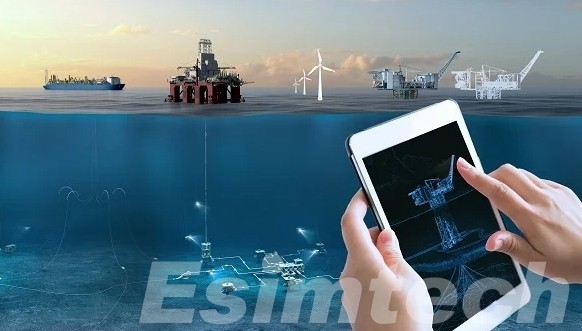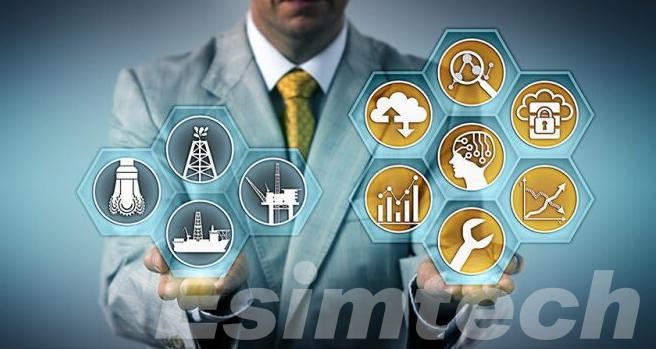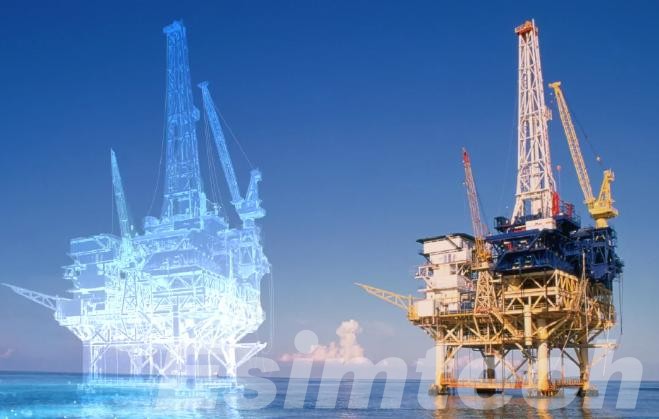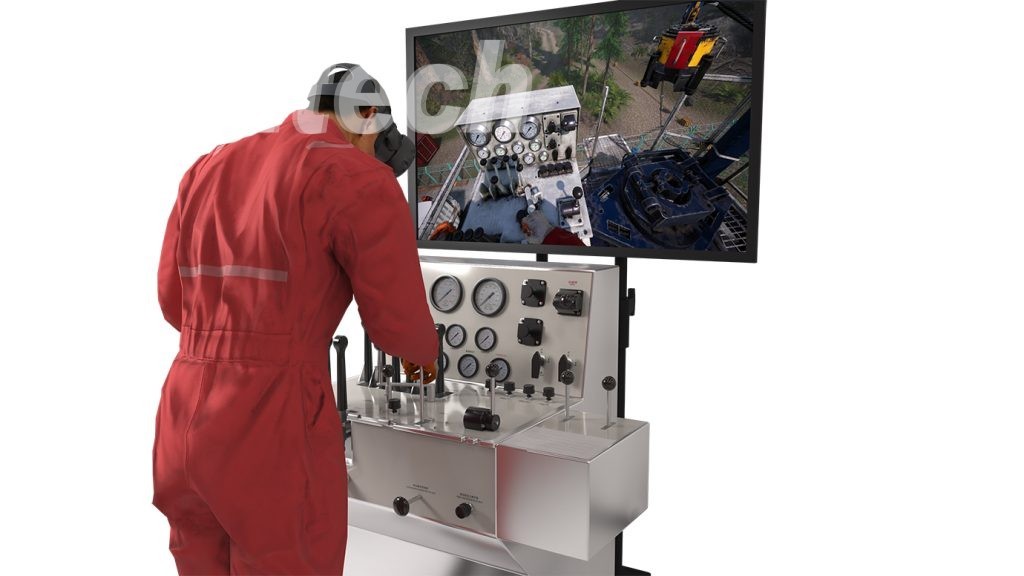How Digitalization is Revolutionizing Gas Production
The natural gas industry is undergoing a significant transformation driven by digitalization. This integration of advanced technologies is impacting every aspect of gas production, from optimizing well operations to upskilling the workforce. Let’s delve into how digitalization is shaping the future of gas production.

Digitalization in Gas Production Process
The traditional gas production process involved a significant degree of manual intervention and reliance on human expertise. While experience is still valuable, digitalization is transforming how gas is extracted and managed. Here’s a closer look at the key technologies driving this transformation:
Sensor Networks and the Industrial Internet of Things (IIoT)
A dense network of sensors embedded throughout wells, pipelines, and processing facilities forms the backbone of digitalization in gas production. These sensors collect real-time data on various crucial parameters, including:
- Pressure: Monitoring pressure fluctuations within wells and pipelines helps identify potential leaks, blockages, and inefficiencies. Early detection allows for swift intervention, minimizing production losses and safety risks.
- Temperature: Real-time temperature monitoring helps optimize wellbore integrity and prevent equipment overheating. This is especially important for subsea wells and pipelines exposed to extreme conditions.
- Flow Rates: Precise measurement of gas flow rates allows for production optimization and identification of potential bottlenecks within the production system. Deviations from expected flow rates can indicate issues like equipment malfunction or changes in reservoir conditions.
- Vibration Analysis: Sensors can detect subtle vibrations in equipment, providing early warning signs of potential component wear and tear. This facilitates predictive maintenance strategies, preventing catastrophic failures and unplanned downtime.
Data Analytics and Predictive Maintenance
Without context and interpretation, sensor networks merely produce raw data, which in itself holds little value. Advanced data analytics tools help make the data more insightful and useful. Some of the analytics tools can do the following:
- Identify Patterns and Anomalies: Algorithms can discover patterns and whatever breaks the norms in historical data and real-time sensor readings, which typically humans would miss. This drastically improves maintenance, and issues are kept from escalating to catastrophic levels.
- Predictive Maintenance Models: Based on historical data, any sort of machinery can be trained on machine learning algorithms to determine any failures with great precision. Maintenance can be scheduled accordingly to ensure the machinery is serviced before any critical failure, to avoid outages and slash maintenance costs.
- Reservoir Management: Geological data of gas reservoirs can be understood better with the help of other data analytics tools, which is key in forecasting gas reserves. Mastering pressure, flow rate, and seismic data patterns allows engineers to refine and improve on production strategies, gas recovery, and the environmental impact optimally.
Digital Twins:
Virtual models, which include wells along with platforms and pipelines, are known as digital twins. They are constructed through tangible data and tangible functioning, which helps in Physical Simulation. They serve as:
- Production Optimization: Engineers can use digital pairs to monitor a production stimulus without interference with the production systems. Digital twins can also monitor the over systems, swivels, and propose the best systems techniques and production techniques in equipment formations pliable.
- Remote Monitoring and Control: Digital pairs can also use sensor systems to data along monitor data to assist in the remote control of the production activities. This is particularly helpful in offshore wells and remote areas for well control.
- Improved Safety: Digital twins can estimate and rehearse for emergencies with personalized scenarios with use of the hyper-realistic twins. These are useful for safe world accident preparation.
The integration of these technologies allows for a more data-driven approach to gas production, leading to significant improvements in efficiency, safety, and environmental responsibility.

Digitalization Used in Gas Production Training
The traditional approach to training in the gas production industry involved classroom lectures, printed manuals, and on-the-job shadowing. While valuable, these methods can be time-consuming, location-specific, and struggle to fully prepare workers for complex situations. Here’s where digitalization steps in, offering a transformative learning experience:
Virtual Reality
VR offers richly detailed simulations of gas production and related activities that trainees can drill gas wells, move through danger areas, and conduct emergency drills: all activities that can be done in real-life scenarios. What VR offers and its Benefits.
- Safety: enables experts to conduct and practice any life-threatening procedure without their body worrying about any physical and mental strain. Seamless without consequences, trainees can practice any techniques without intuitive fear.
- Immersion: VR enhances retention and decision-making skills by presenting knowledge in a suggested scenario that is real and easily accessible.
- Scalability: The reduction of training costs and other associated expenses can also be done with VR. These simulations can be altered to focus on specific training needs and specific areas of the subject.
E-Learning Platforms
Gas production training can be delivered through online learning systems, which provide ease of access and convenience. Such platforms can hold different types of online content, which include the following:
- Interactive Modules: Using game-based learning modules to teach critical gas production fundamentals, safety protocols, and equipment operation makes the learning process more enjoyable and more likely to be retained.
- Microlearning Content: These training modules provide time-effective training and aid in retention by focusing on single topics. This is especially useful on tight schedules.
- Video Tutorials: Trainees struggling with equipment and process can greatly benefit from video demonstrations able to provide clear visual aids on complex procedures and equipment use.
Challenges and Considerations of Digitalization on Gas Production
The gas industry is presented with new challenges and in a digitally improving world, there are issues that need to be tackled carefully. These issues need to be properly understood and tackled to reach a lasting solution. Let us examine some of the issues.
1. Cybersecurity Threats: The production of gas is the weakest target to attack as it is hinging on the networks of many other systems which include sensor fields, various computing, and remote control of the gas tanks. The attack can result in gas production being paralyzed, secret data being stolen, and many other undesirable forms of production. This is why a robust policy is needed which includes:
- The use of data encryption that is aimed at stopping information leakage.
- Releasing regular updates on the systems to patch the new vulnerabilities that come up.
- Systematic auditing on an organization’s security structure through red and blue teams to patch exploitable vulnerabilities.
- The setup of staff structures that encourage common sense approached to sensitive issues like phishing.
2. Integration Costs: Implementing new technologies like digital twins, advanced analytics platforms, and sensor networks requires significant upfront investment.

These costs encompass not only acquiring the technology but also integrating it with existing infrastructure and training personnel to utilize it effectively. Companies need to:
- Conduct thorough cost-benefit analyses to ensure the return on investment justifies the initial expenses.
- Explore options like cloud-based solutions that can offer flexible deployment options and potentially reduce upfront costs.
- Consider phased implementation plans, prioritizing the technologies with the most significant impact on efficiency and safety.
3. Upskilling the Workforce: The transition to a digitalized gas production environment demands a workforce equipped with new skills. Traditional experience-based knowledge may not be sufficient to operate and maintain complex digital systems. Companies must invest in workforce development programs to bridge the digital skills gap, such as:
- Providing training programs on new technologies like data analytics, machine learning, and VR/AR simulations.
- Encouraging continuous learning and knowledge sharing within the organization.
- Partnering with educational institutions to create training programs tailored to the industry’s evolving needs.
- Fostering a culture of innovation and experimentation to encourage employees to embrace new technologies.

4. Data Management and Ownership: Digitalization creates massive quantities of information through sensor networks, machine readings, and even production simulations. To manage, store, and analyze this information siloed in sub systems requires complex strategic data processes. Companies need to face challenges of:
- Establishing effective access controls and ownership boundaries to prevent data breaches and abide by applicable policies and law.
- Integrating data policies to facilitate collection, retention, and permissible use of information headlined by data altruism.
- Augmenting internal data analysis capabilities to ensure production workflows are data driven and insights are actionable.
5. Resistance to Change: When it comes to implementing changes to established practices, certain employees may prefer traditional methods which pose a problem. For such employees, companies must:
- Make a clear case. Explain the positive outcomes of digitalization, including enhancing productivity, promoting safety, and streamlining processes.
- Incorporate people. Manage the changes. Listen to the employees and attempt to solve the issues they highlight.
- Prepare employees. Demo support and train employees on the changes and technology integration to work processes.
Gas producers need to take into consideration these issues carefully and take a proactive approach to solve these problems. They still need to make sure the digitalization they engage in will be to promote responsible, sustainable, and efficient gas production.
Conclusion
Digitalization is revolutionizing the gas production industry, paving the way for increased efficiency, safety, and productivity. By embracing these advancements and addressing the associated challenges, gas producers can unlock a future of sustainable and responsible resource extraction.
